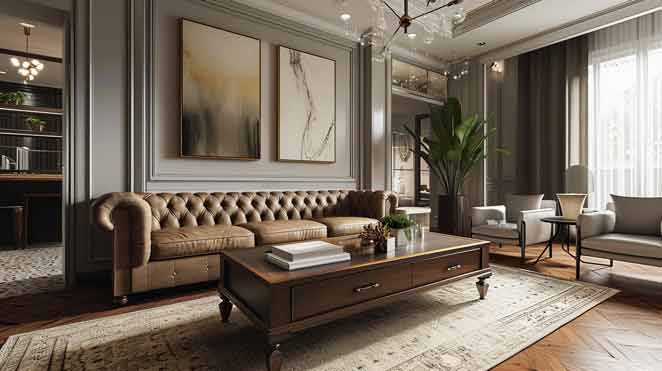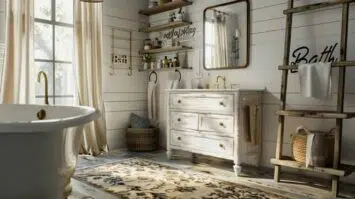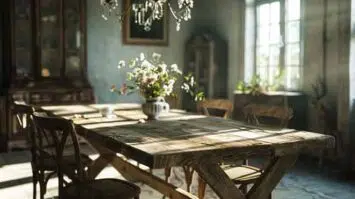Welcome to the enchanting world of the Transitional Living Room, where traditional elegance seamlessly merges with modern simplicity. This style, celebrated for its harmonious blend, offers a versatile canvas for those who cherish timeless beauty alongside contemporary appeal.
In this inviting yet sophisticated space, a serene palette of neutral colors creates an atmosphere that is both welcoming and chic. Here, the fusion of different eras and styles is not just welcomed but celebrated, providing a foundation for personal expression and comfort.
As a knowledgeable friend guiding you through the nuances of interior design, I’m here to help you navigate this delightful blend. Together, we’ll discover how to achieve a living room that is aesthetically pleasing, deeply comforting, and functional, making it the perfect sanctuary for every moment of your life.
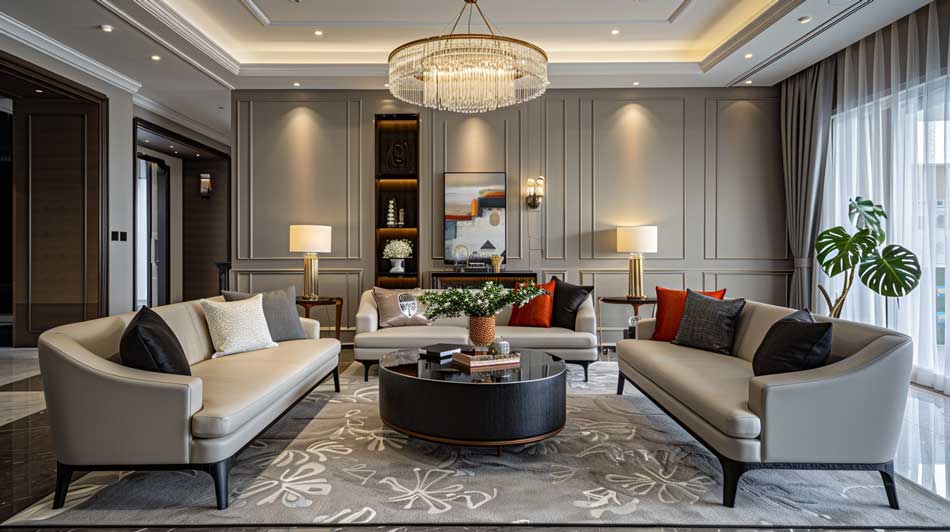
The Heart of Transitional Living Room Design
Transitional living room design is a celebration of balance, a design philosophy that marries the inviting warmth of traditional styles with the understated simplicity of contemporary schemes. Born in the 20th century, this approach has won the hearts of many, praised for its ability to navigate the complexities of different design periods with grace and flexibility.
It’s a style characterized by a neutral palette, textured diversity, and an eclectic mix of furniture that speaks both of history and of the moment. Imagine your living room serving as a canvas where each piece—from a plush, velvet Chesterfield to a sleek, minimalist coffee table—contributes to a narrative of elegance and comfort. This is the essence of a transitional living room: a space that feels intuitively right, offering a blend of the familiar with the refreshing.
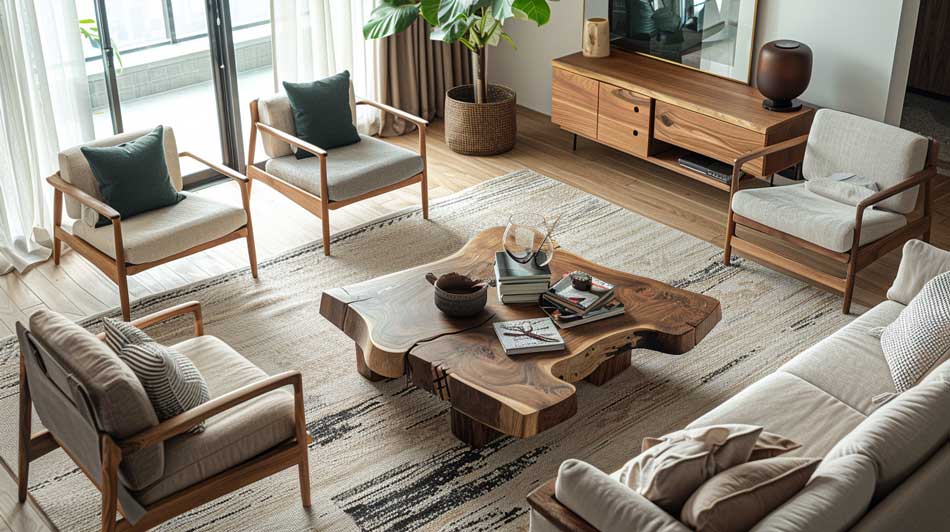
Crafting a Transitional Living Room: Key Elements
Creating a transitional living room is an art that relies on a few fundamental elements, each playing a crucial role in harmonizing traditional and contemporary vibes.
- Color Schemes: Start with a soothing, neutral color palette. Shades of beige, taupe, ivory, and gray set the stage for a serene atmosphere, allowing both old and new elements to shine without competition.
- Furniture Styles: Here, the beauty lies in the balance. Opt for furniture that straddles the line between eras—think a traditional wooden coffee table paired with a modern sofa. It’s about creating cohesion, not contrast.
- Textiles and Fabrics: Embrace a mix of luxurious and comfortable materials. From suede to chenille, the textures you choose add depth and warmth, making your living room not just a sight to behold but a haven of tactile pleasure.

Benefits of Embracing Transitional Design
Choosing a transitional design for your living room comes with a bouquet of benefits. Its timeless nature means your space remains stylish and relevant, year after year. This design philosophy thrives on balance, offering a welcoming middle ground for varied tastes. Its adaptability is another plus, allowing you to infuse personal touches and evolve your space with ease. Lastly, it cultivates an atmosphere of sophisticated comfort, making your living room not just a place to look at but a place to live in.
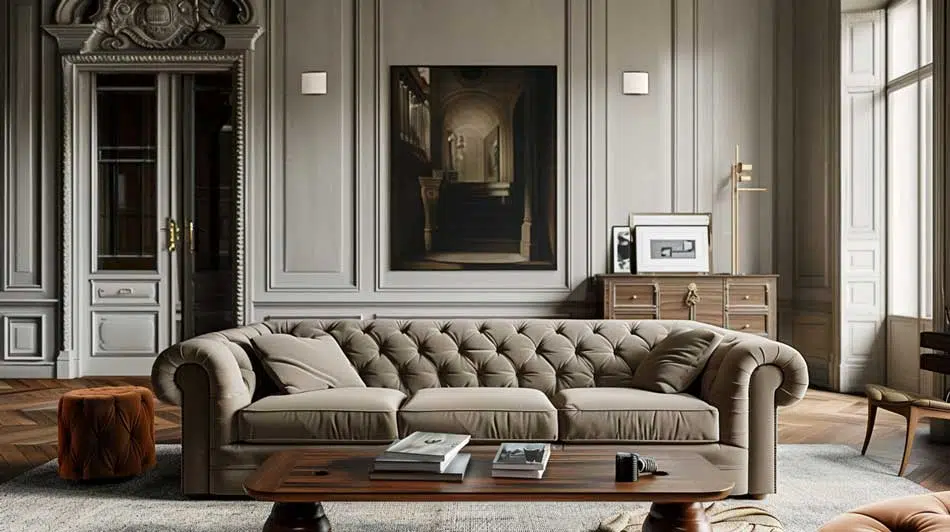
Real-Life Inspirations
From custom-made textured fireplaces acting as focal points to the strategic use of contrasts and textures, real-life transitional living rooms serve as proof of the style’s versatility and allure. Whether it’s the airy brightness of a space enhanced by sustainable materials or the bold statement of a dark-toned rug against white decor, these examples showcase the dynamic interplay of elements that define transitional living rooms.
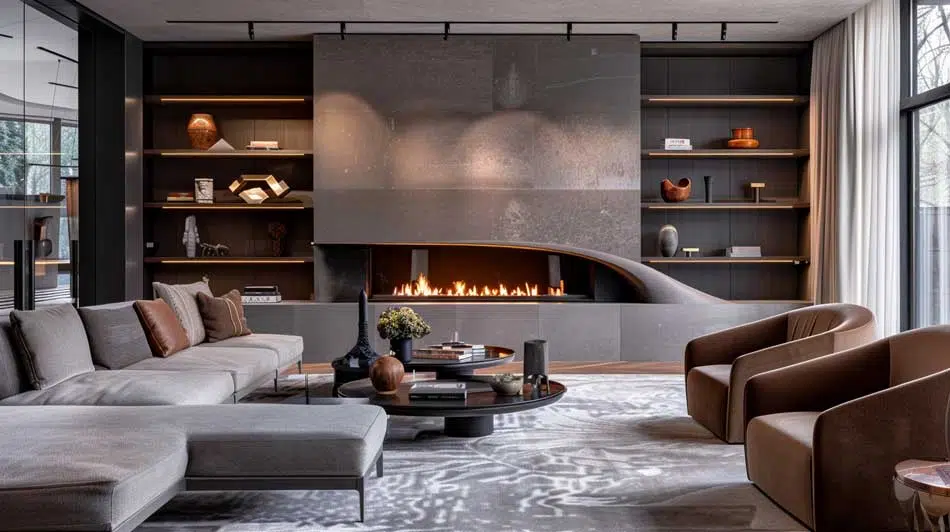
Achieving the Transitional Look: Practical Tips
Achieving the transitional look is about striking the right balance. Mix traditional and modern elements thoughtfully, choose accessories that bridge styles seamlessly, and don’t forget to layer in personal touches. Opt for a neutral color base, play with textures, and be mindful of scale and proportion to ensure harmony. Lighting, too, plays a pivotal role—combine different sources to create a warm, inviting ambiance.
Navigating Common Pitfalls
Awareness of common mistakes, like over-cluttering, mismatching scales, or neglecting personal style, is key to maintaining the elegance and cohesion of your transitional living room. Embrace the principle of balance and let your space reflect your unique taste within the transitional design framework.
Conclusion: A Living Room That Tells Your Story
In essence, a transitional living room is more than just a space—it’s a narrative of balance, blending the elegance of the past with the simplicity of the present. It’s a testament to the beauty of harmonious design, where every choice, from the color palette to the furniture, contributes to a living space that’s not just stylish but deeply welcoming. As we embrace transitional design in our living rooms, we open our homes to a timeless elegance that comfortably accommodates our changing lives and tastes, creating a space that truly feels like home.

